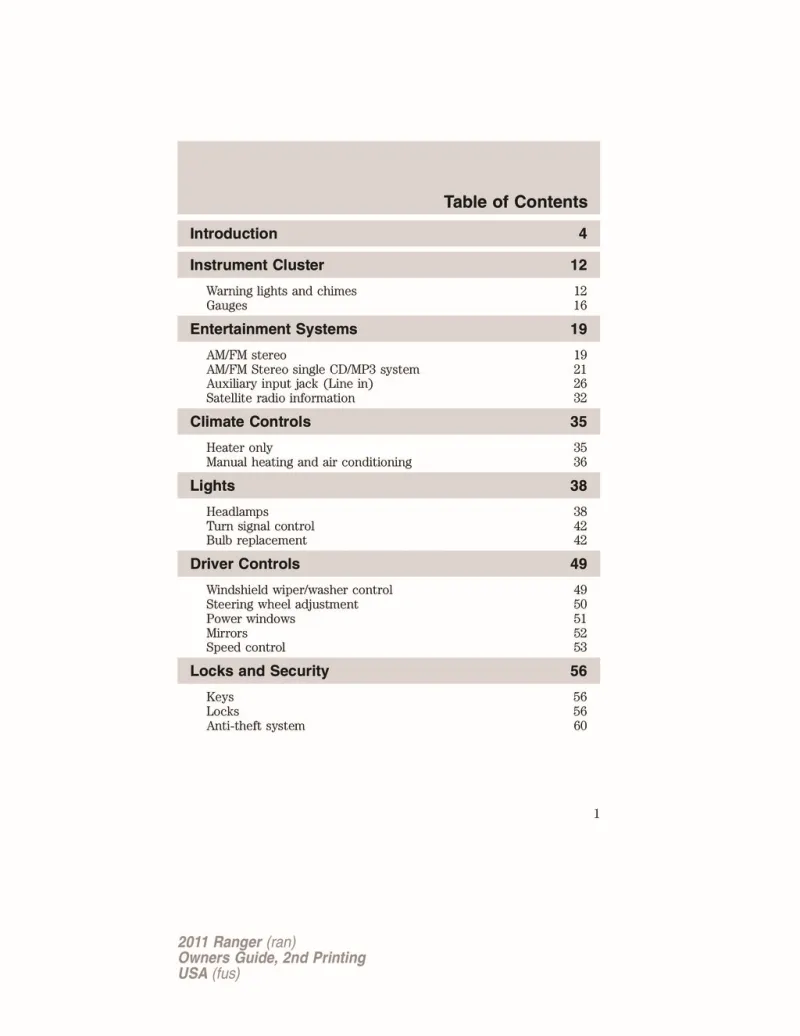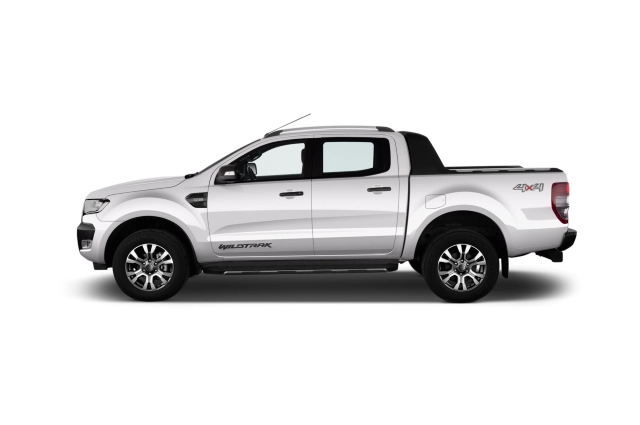2011 Ford Ranger Owner's Manual

Table of Contents
2011 Ford Ranger Overview
Introduction
The 2011 Ford Ranger stands as a compact pickup truck that combines rugged durability with commendable versatility. With its robust design and impressive performance, the Ranger has earned a reputation for being an ideal companion for both urban commuters and outdoor adventurers. The 2011 model showcases Ford's dedication to delivering a dependable vehicle that meets the demands of various driving scenarios, from light hauling to off-road excursions.
Powertrains
The 2011 Ford Ranger comes equipped with two highly capable engines, giving drivers the option to choose power according to their needs. The base engine is a 2.3-liter inline-four that produces 143 horsepower, delivering a balanced mix of efficiency and performance. For those seeking more power, the available 4.0-liter V6 engine offers an impressive 207 horsepower, significantly enhancing the truck's towing and hauling capabilities. Both engines are paired with a five-speed manual transmission, while an optional five-speed automatic transmission is also available for added convenience.
Trims
This model year offers several trims for drivers to select from, including the Base, XL, XLT, and the sporty FX4. Each trim levels up the Ranger's functionality and comfort, with higher trims incorporating features like chrome bumpers, upgraded audio systems, and enhanced seating materials. The FX4, in particular, stands out with its off-road enhancements, making it a favorite among off-road enthusiasts.
Features
The 2011 Ranger is equipped with a range of features designed to enhance both safety and comfort. Standard features include air conditioning, an AM/FM radio with a CD player, and optional Bluetooth connectivity. Safety elements, such as anti-lock brakes and airbags, are also included, ensuring peace of mind while driving on and off the road. The optional bed extender and vinyl flooring add to the truck's practical appeal, catering to outdoor and work-related tasks.
Owner's Manual
The owner's manual for the 2011 Ford Ranger serves as an invaluable resource for new and seasoned owners alike. It includes comprehensive information on vehicle maintenance, troubleshooting, and specifications, ensuring that drivers can keep their Ranger running optimally. From detailed service schedules to helpful tips on maximizing fuel efficiency, the manual enhances the overall ownership experience, providing guidance tailored to the unique demands of the Ranger.
User manual download
The Ford Ranger owner manual for the 2011 model year is to be found in PDF downloadable format on this page. The owner manual for the model year 2011 is free and in English, but the repair manuals are usually not easy to get and may cost more.
Manual Questions
Fill the form below and someone will help you!

